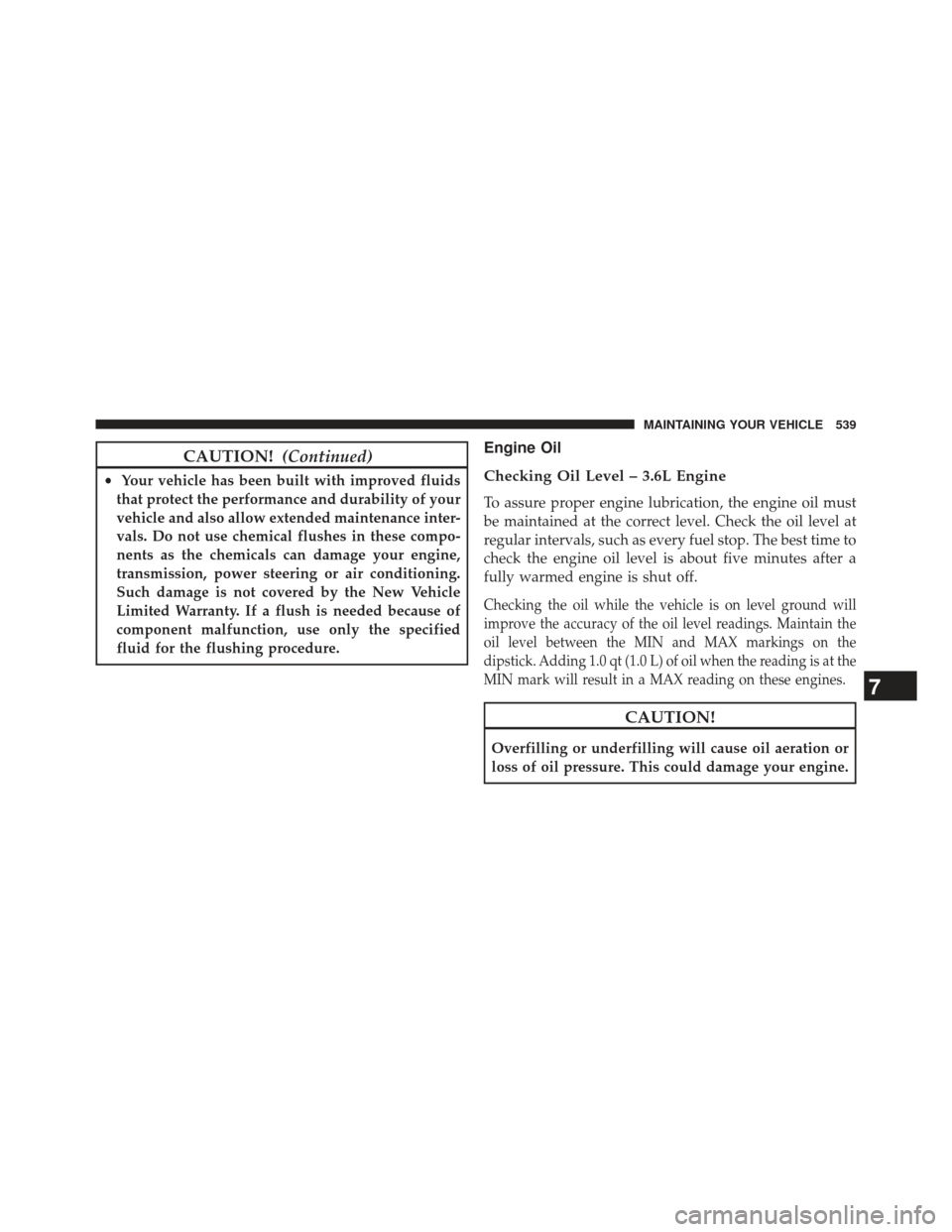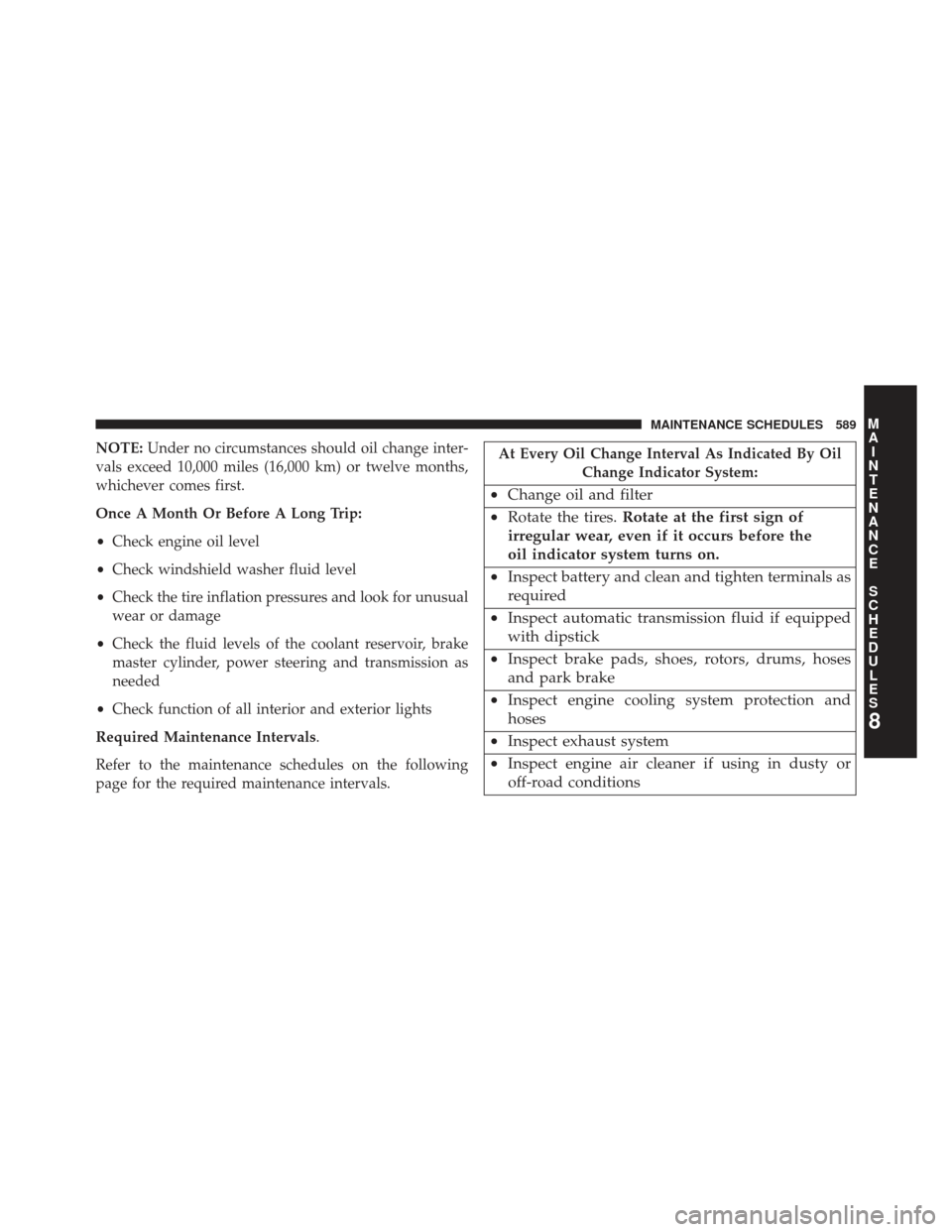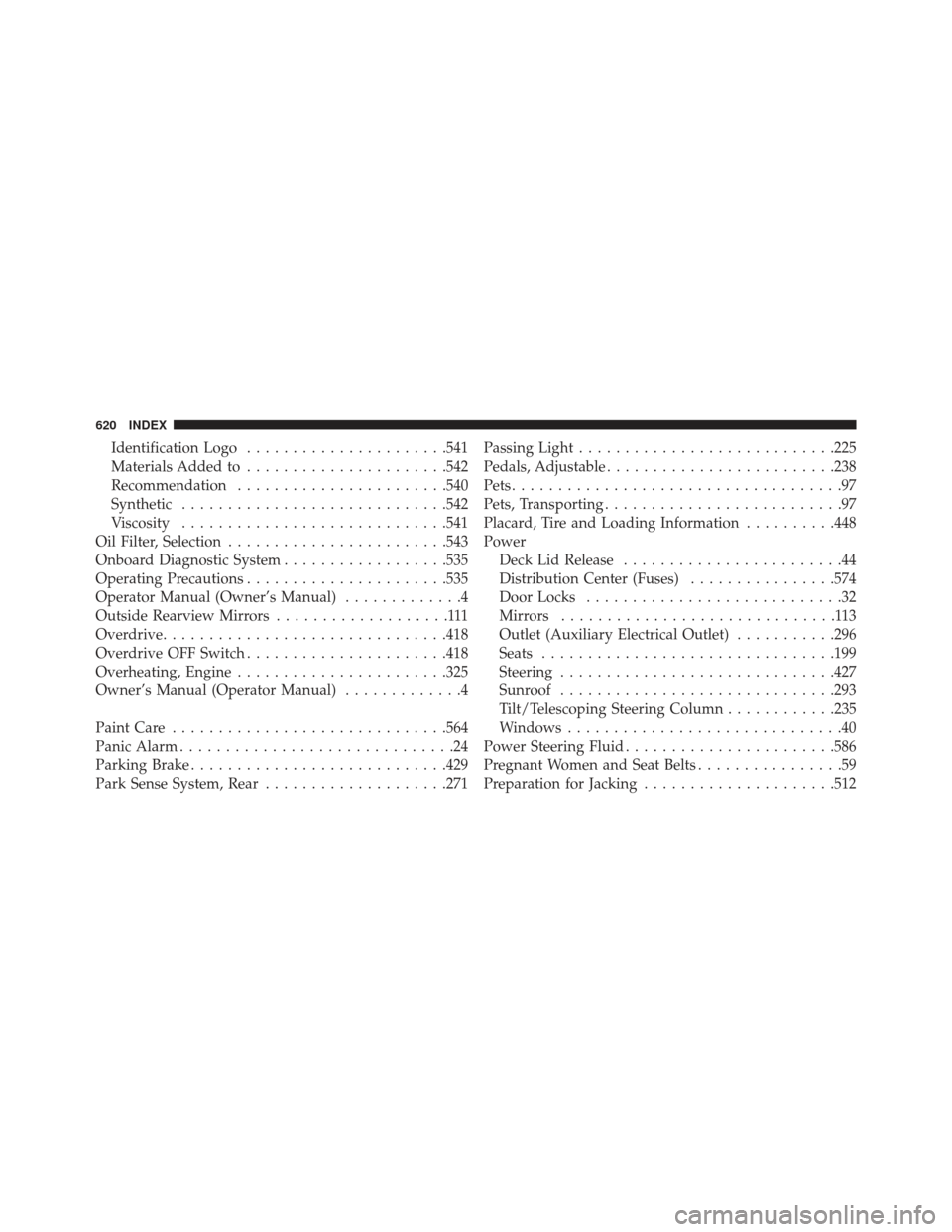Page 104 of 631
Periodic Safety Checks You Should Make Outside
The Vehicle
Tires
Examine tires for excessive tread wear and uneven wear
patterns. Check for stones, nails, glass, or other objects
lodged in the tread or sidewall. Inspect the tread for cuts
and cracks. Inspect sidewalls for cuts, cracks and bulges.
Check the wheel nuts for tightness. Check the tires
(including spare) for proper cold inflation pressure.
Lights
Have someone observe the operation of brake lights and
exterior lights while you work the controls. Check turn
signal and high beam indicator lights on the instrument
panel.
Door Latches
Check for positive closing, latching, and locking.
Fluid Leaks
Check area under vehicle after overnight parking for fuel,
engine coolant, oil, or other fluid leaks. Also, if gasoline
fumes are detected or if fuel, power steering fluid, or
brake fluid leaks are suspected, the cause should be
located and corrected immediately.
102 THINGS TO KNOW BEFORE STARTING YOUR VEHICLE
Page 541 of 631

CAUTION!(Continued)
•Your vehicle has been built with improved fluids
that protect the performance and durability of your
vehicle and also allow extended maintenance inter-
vals. Do not use chemical flushes in these compo-
nents as the chemicals can damage your engine,
transmission, power steering or air conditioning.
Such damage is not covered by the New Vehicle
Limited Warranty. If a flush is needed because of
component malfunction, use only the specified
fluid for the flushing procedure.
Engine Oil
Checking Oil Level – 3.6L Engine
To assure proper engine lubrication, the engine oil must
be maintained at the correct level. Check the oil level at
regular intervals, such as every fuel stop. The best time to
check the engine oil level is about five minutes after a
fully warmed engine is shut off.
Checking the oil while the vehicle is on level ground will
improve the accuracy of the oil level readings. Maintain the
oil level between the MIN and MAX markings on the
dipstick. Adding 1.0 qt (1.0 L) of oil when the reading is at the
MIN mark will result in a MAX reading on these engines.
CAUTION!
Overfilling or underfilling will cause oil aeration or
loss of oil pressure. This could damage your engine.
7
MAINTAINING YOUR VEHICLE 539
Page 588 of 631
Chassis
ComponentFluid, Lubricant, Or Genuine Part
Automatic Transmission – 8-Speed Transmission We recommend you use Shell L12108 Transmission Fluid.
Automatic Transmission – 5-Speed Transmission We recommend you
ONLYuse MOPAR® ATF+4® Automatic
Transmission Fluid. Failure to use ATF+4® fluid may affect the function or performance of your transmission.
Brake Master Cylinder We recommend you use MOPAR® DOT 3 and SAE J1703. If DOT 3 brake fluid is not available, then DOT 4 is acceptable.
Power Steering Reservoir We recommend you use MOPAR® Hydraulic Fluid or equivalent
meeting MS-11655, such as Fuchs EG ZH 3044 or Pentosin CHF 11s.
Front Axle We recommend you use API GL-5 SAE 75W90 Synthetic Gear Lubricant.
Rear Axle We recommend you use API GL-5 SAE 75W140 Synthetic Gear Lubricant.
Transfer Case We recommend you use MOPAR® Transfer Case Lubricant for
BorgWarner 44–40.
586 MAINTAINING YOUR VEHICLE
Page 591 of 631

NOTE:Under no circumstances should oil change inter-
vals exceed 10,000 miles (16,000 km) or twelve months,
whichever comes first.
Once A Month Or Before A Long Trip:
• Check engine oil level
• Check windshield washer fluid level
• Check the tire inflation pressures and look for unusual
wear or damage
• Check the fluid levels of the coolant reservoir, brake
master cylinder, power steering and transmission as
needed
• Check function of all interior and exterior lights
Required Maintenance Intervals.
Refer to the maintenance schedules on the following
page for the required maintenance intervals.At Every Oil Change Interval As Indicated By Oil Change Indicator System:
•Change oil and filter
• Rotate the tires. Rotate at the first sign of
irregular wear, even if it occurs before the
oil indicator system turns on.
• Inspect battery and clean and tighten terminals as
required
• Inspect automatic transmission fluid if equipped
with dipstick
• Inspect brake pads, shoes, rotors, drums, hoses
and park brake
• Inspect engine cooling system protection and
hoses
• Inspect exhaust system
• Inspect engine air cleaner if using in dusty or
off-road conditions
8
M
A I
N T
E
N
A
N
C E
S
C
H E
D
U L
E
SMAINTENANCE SCHEDULES 589
Page 622 of 631

Identification Logo..................... .541
Materials Added to ..................... .542
Recommendation ...................... .540
Synthetic ............................ .542
Viscosity ............................ .541
Oil Filter, Selection ....................... .543
Onboard Diagnostic System ..................535
Operating Precautions ..................... .535
Operator Manual (Owner’s Manual) .............4
Outside Rearview Mirrors ...................111
Overdrive .............................. .418
Overdrive OFF Switch ..................... .418
Overheating, Engine ...................... .325
Owner’s Manual (Operator Manual) .............4
Paint Care ............................. .564
Panic Alarm ..............................24
Parking Brake ........................... .429
Park Sense System, Rear ....................271 Passing Light
........................... .225
Pedals, Adjustable ........................ .238
Pets ....................................97
Pets, Transporting ..........................97
Placard, Tire and Loading Information ..........448
Power Deck Lid Release ........................44
Distribution Center (Fuses) ................574
Door Locks ............................32
Mirrors ..............................113
Outlet (Auxiliary Electrical Outlet) ...........296
Seats ............................... .199
Steering ............................. .427
Sunroof ............................. .293
Tilt/Telescoping Steering Column ............235
Windows ..............................40
Power Steering Fluid ...................... .586
Pregnant Women and Seat Belts ................59
Preparation for Jacking .....................512
620 INDEX